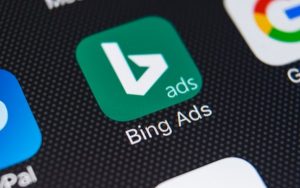Launching a new product is anything but easy. Forty percent of new products fail, according to an article from The Journal of Product Innovation Management.
This stat is worrisome, particularly for small ecommerce sellers. They are likely to have less capital to lose on failed products than larger businesses do.
Plan your product launch to mitigate the risk of failure, draw in customers, and stay out of the graveyard of failed startups. To help you form a product launch strategy, we’ll review five elements of the marketing-mix framework: Product, People, Pricing, Promotion, and Place. Each element stands for different questions that ecommerce sellers should answer to successfully launch a new product.
1. Product: What product are you launching, and why?
This question is about knowing what to launch, but it’s even more about understanding why you’re creating a product. By answering these questions, you’ll be able to craft compelling, unique messaging around your product.
Set your vision for your product by performing market research to understand where your product fits in its overall category. Your research should help you understand where and how your product will fit into consumers’ lives and how to communicate with the demographics you’re targeting.
Conducting extensive market research not only puts new businesses in a position to analyze the market for opportunities but also decreases the risk of launching a product or service that nobody cares for.
Another way to figure out why you’re creating a product is to write down its core value proposition. This is a statement that can be used to describe what your brand and product offer that others don’t. Reference the weaknesses of your competitors, and address how your product fills those gaps.
There are several templates that can help you build out a value proposition, but the simplest one is Steve Blank’s formula: We help (X) do (Y) by doing (Z). This simple statement should succinctly explain your product’s purpose to anyone who comes across it.
2. People: Who is your customer, and how well do you know them?
Since your product is brand-new, it’s best to plan for every possible audience.
A great way to understand your potential customer is to build buyer personas. These are imaginary versions of your ideal customer base.
When developing buyer personas, focus on the following:
- Researching your target audience via phone calls, email surveys, or in-person interviews
- Keeping an eye out for demographic details related to age, behavior, characteristics, challenges, goals, etc.
- Creating separate user personas for each segment you’ve identified
Discovering this information will require a mix of primary and secondary market research, which doesn’t need to be expensive or difficult. Start with people you have immediate access to, like friends and family as well as online participants.
When asking questions, demographic and psychographic questions are just as important as opinion-based questions. This can provide a clearer view of your customer base and show you customers you might not have considered as a potential audience.
Grace Nichols, Sr. Ecommerce Growth Strategist at Elumynt, recommends that “when identifying buyer personas, it’s vital to understand their ‘why’. Specifically, what motivates them to buy things? Maybe they’re motivated by status, finding a great deal, or by how much they will use the product, etc. Knowing this mitigates launch risks by enabling brands to address these motivations through unique messaging tailored to each persona and validates each group’s ‘why’ out the gate.”
Consider testing your product with real users way before the launch. In case there are issues, you’ll be able to fix them before the launch. If there are no issues, you can use the customers’ positive feedback as part of your promotion campaign. This tactic creates case studies and super fans who vouch for your product.
To get a feel for what your customers’ experience with your product and online store will be like, consider mapping the customer journey. Use templates to visualize how your customers will move from discovery of your product to purchase of your product, eliminating as many roadblocks as possible. Think like the consumer to find out what does and doesn’t work, and why they might have these reactions.
3. Pricing: How will you price your products?
According to Retail Touch Points, competitive pricing is the number one factor consumers consider when making online purchases. This is especially important to remember when launching a new product.
Your customers need to see the value in your product and understand why it’s priced in a certain way. If they can’t see the value, and you’re not offering competitive pricing, you’re probably going to fail.
Keep in mind that your ecommerce pricing doesn’t necessarily need to match or be lower than every competitor. Know the value of your product, whether that’s the online store experience or the quality of the materials you use—and charge accordingly.
Don’t just set your price and forget about it. After setting the price of a new product, revisit it periodically to make sure you’re keeping up with industry standards and meeting or surpassing your profit potential. Use our ecommerce pricing guide to find the best model.
4. Promotion: How will you promote your products?
Promotion is particularly important for new product launches because you need to tell people about something in order for them to know it. A lot of customers won’t find out about your new product otherwise.
Effective promotion boils down to understanding which channels your audience prefers and what communication tactics are best for these channels—two factors that are constantly changing.
Social media marketing
Social is an incredibly valuable channel for any ecommerce store owner, new or not. Nearly 80% of consumers “have made a purchase based on online or social media advertisements.”
Take advantage of social by researching which social media platforms your target customer uses most. You can do this by adding a question to your market research about preferred social media or performing secondary research.
This information can help with determining where to place ads, which influencers to partner with, and how to craft your brand communications.
Your tools should aid in the development of branded content and assets and should take a load off, not pile on more. Tools like Frontify which allows you to manage brand assets and Buffer which allows you to manage multiple social media accounts from one platform, also automate social media for you.
Influencer marketing
Influencers are an especially valuable marketing channel. A MediaKix study reported that “80% of marketers find influencer marketing effective,” and 89% find influencer marketing has comparable or even better ROI than other marketing channels.
Leverage influencers within your brand’s niche to spread the word about your product launch. You partner with influencers through various methods, from having them try your product and posting about it to sharing discount codes with their followers.
If you can’t afford the influencers’ rates, consider leveraging your customers as brand ambassadors with user-generated content (UGC). According to a survey by Statista, 25% of marketing professionals consider everyday consumers to be the most effective influencers.
Implement UGC by encouraging customers to share how they use your product on social media by using a branded hashtag. Add incentives, like giveaways, to boost sharing. This extra push is especially helpful at the launch stage when few people know about your product.
Content marketing
Create content to spread awareness about your brand and new product. Everything from short videos to blog posts can be great, low-cost ways to market your product.
When creating content, take a customer-first approach instead of a product-first one. Consider the customer challenges you’ve identified as they relate to your product, and use content to address them.
Your content can focus anywhere from the top to the bottom of the funnel. When creating content for your product launch, keep the following in mind:
- Leverage SEO best practices to rank on search.
- Incorporate visual assets to make your brand as visible as possible.
- Know which channels are relevant to your audience, and publish on them.
By investing in content for your product launch, you can transform customers from being window shoppers to being ready-to-buy consumers.
Email marketing
Email marketing should be a top product-promotion strategy for any ecommerce seller. According to a Retail Touchpoints survey, “63% of consumers say email is the most effective tool to get them to shop at a particular retailer.”
But remember that your customers are probably receiving emails from a lot of other brands, so you’ll need to stand out. Leverage email as a channel to not only promote your product but also connect with your customers on a more personal level.
Don’t treat email as a way to get people to buy stuff. It’s a way for you to connect meaningfully with your customers by showing that you understand them and their interests.
5. Place: Where will your customers make a purchase after product launch?
Your audience is the most important factor in choosing where to sell your products. To determine which selling channels your audience will prefer, consider adding a segment to your survey or interview at the research stage.
No matter what channels you pick, you’ll want to offer a great user shopping experience on all of them. After all, 32% of consumers said a user-friendly online experience was the most important influencing factor for online performances.
One thing to keep in mind is that sellers who use 3 or more channels see greater success than those who use fewer channels. This is because multichannel sellers have access to bigger audiences and the unique features of each platform that help maximize revenue.
You can’t plan for every scenario — and that’s okay
While you can (and should) plan for your product launch, you’ll never be able to anticipate everything. Don’t assume that everything will go as planned. Instead, expect to face bumps along the way.
Even if your plans don’t come to fruition, the process of thinking through every aspect of your launch — using the five Ps of this guide — will help the process go as smoothly as possible.
How do you deal with these setbacks? By having solid brainstorming in place to lean on when the unexpected happens. Have confidence in your work and your product.
Business & Finance Articles on Business 2 Community
(63)








